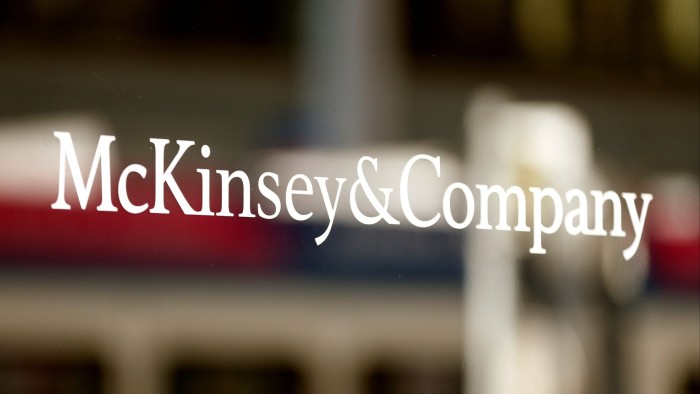Unlock the Editor’s Digest for free
Roula Khalaf, Editor of the FT, selects her favourite stories in this weekly newsletter.
Sometimes you have to take your own medicine. McKinsey & Co, the most blue-blooded of consultancies, has decimated its workforce over the past 18 months — the type of measure that its industry might commonly prescribe to clients.
Consultancies have been running on empty for several years. It’s hard to be the smartest person in the room when competition comes from private equity, artificial intelligence and even — since the industry counts the public sector among its clientele — tech moguls like Elon Musk with a passion for engineering and the ear of the US president.
If the competition has changed, so too has the backdrop. Rather than bringing in one-time experts, companies can now more easily access turnaround playbooks themselves. Trends such as digitisation and moving production to lower-cost places have had their day. In-house project managers now execute on everything from smarter workflow to customer relations.
This year has brought some extra challenges for consultants, such as on-off tariffs and whimsical policymaking, notably in the US. No one wants to shell out hundreds of dollars an hour for advice rendered irrelevant by the end of the week. That all makes it tougher to increase revenue, a number which privately held McKinsey sometimes discloses, but this year has not.
When top line growth is a challenge, the next best thing is to cut costs. And in professional services, costs are all about staff. McKinsey generated $355,000 of revenue per employee, based on 2023 numbers. That weighs in below Boston Consulting Group’s $409,000 last year. But the duo comfortably outstripped the more tech-focused Accenture’s $84,000, again on last year’s numbers.
As might be expected from an outfit of professionals, McKinsey’s pruning of the ranks is being done carefully. Attrition, a euphemism for letting staff leave and not replacing them does the work without the drama. In some cases, attrition can be actively encouraged.
Staff are stickier than was once the case. and ranks have been depleted in both front and back office. But if the average employee stays five years, that implies an annual departure of one-fifth of staff. Savings go beyond payroll. Think fewer subscriptions, software licensing and possibly terminals.
The risk is that attrition means losing good people too. But in McKinsey’s case, there’s a tradition of departees leaving on amicable terms and continuing to rise in the corporate world. McKinsey’s 65,000-strong alumni network has tentacles into investment banking, top corporates and government. Thinning the ranks helps cut costs; if departees morph into clients, maybe it will help with revenue too.
louise.lucas@ft.com
https://www.ft.com/content/da57d309-4e79-4f7b-a7a4-2702bcb2201b


